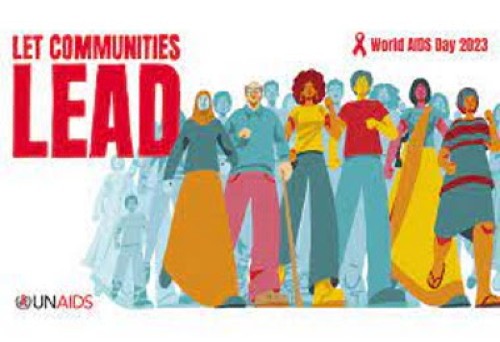GENEVA – UNAIDS is urging governments in the Caribbean and across the world to unleash the power of grassroots communities to lead the fight to end AIDS.
 A new report launched by UNAIDS ahead of World AIDS Day on December 1, shows that AIDS can be ended as a public health threat by 2030, but only if communities on the frontlines get the full support they need from governments and donors.
A new report launched by UNAIDS ahead of World AIDS Day on December 1, shows that AIDS can be ended as a public health threat by 2030, but only if communities on the frontlines get the full support they need from governments and donors.
“Communities across the world have shown that they are ready, willing and able to lead the way. But they need the barriers obstructing their work to be pulled down, and they need to be properly resourced,” said Winnie Byanyima, Executive Director of UNAIDS.
“Too often, communities are treated by decision-makers as problems to be managed, instead of being recognised and supported as leaders. Communities are not in the way, they light the way to the end of AIDS.”
The report, titled “Let Communities Lead,” launched in London during a World AIDS Day event organized by the civil society organization STOPAIDS, shows how communities have been the driving force for progress.
The report shows that investing in community-led HIV programmes delivers transformational benefits.
“We are the vehicle for change that can end systematic injustices that continue to fuel HIV transmission. We have seen groundbreaking developments with U=U, improved access to medicines, and have made great strides in decriminalisation,” said Robbie Lawlor, Co-Founder of Access to Medicines Ireland.
“Yet, we are expected to move mountains without being financially supported. We are supposed to fight for a more equitable world and are tasked with dismantling stigma yet are side-lined in crucial discussions. We are at a tipping point. Communities can no longer be relegated to the periphery. The time for leadership is now.”
The report highlights how communities are at the forefront of innovation. In Windhoek, Namibia, a self-funded project by the youth Empowerment Group is using e-bikes to deliver HIV medicines, food and adherence support to young people who often cannot attend clinics due to their schooling hours. In China, community organizations developed smartphone apps that link people to self-testing which contributed to a more than four-fold increase in HIV tests across the country from 2009 to 2020.
The report reveals how communities are also holding service providers to account. Howver, despite the clear evidence of community-led impact, community-led responses are unrecognized, under-resourced and in some places even under attack.
Crackdowns on civil society and on the human rights of marginalized communities are obstructing communities from providing HIV prevention and treatment services. Underfunding of community-led initiatives is leaving them struggling to continue operating and holding them back from expansion. If these obstacles are removed, community-led organizations can add even greater impetus to end AIDS.
In the 2021 Political Declaration on ending AIDS, United Nations member states recognized the critical role communities play in HIV service delivery, particularly to people most at risk of HIV.
However, whereas in 2012, when over 31 per cent of HIV funding was channelled through civil society organizations, 10 years later, in 2021, only 20 per cent of funding for HIV was available, an unprecedented backsliding in commitments which has cost and is continuing to cost lives.
UNAIDS says every minute, a life is lost to AIDS. Every week, 4,000 girls and young women become infected with HIV, and out of the 39 million people living with HIV, 9.2 million do not have access to lifesaving treatment. There is a Path that Ends AIDS and AIDS can be ended by 2030, but only if communities lead.
UNAIDS is calling for communities’ leadership roles to be made core in all HIV plans and programmes; communities’ leadership roles to be fully and reliably funded and for barriers to communities’ leadership roles to be removed.


